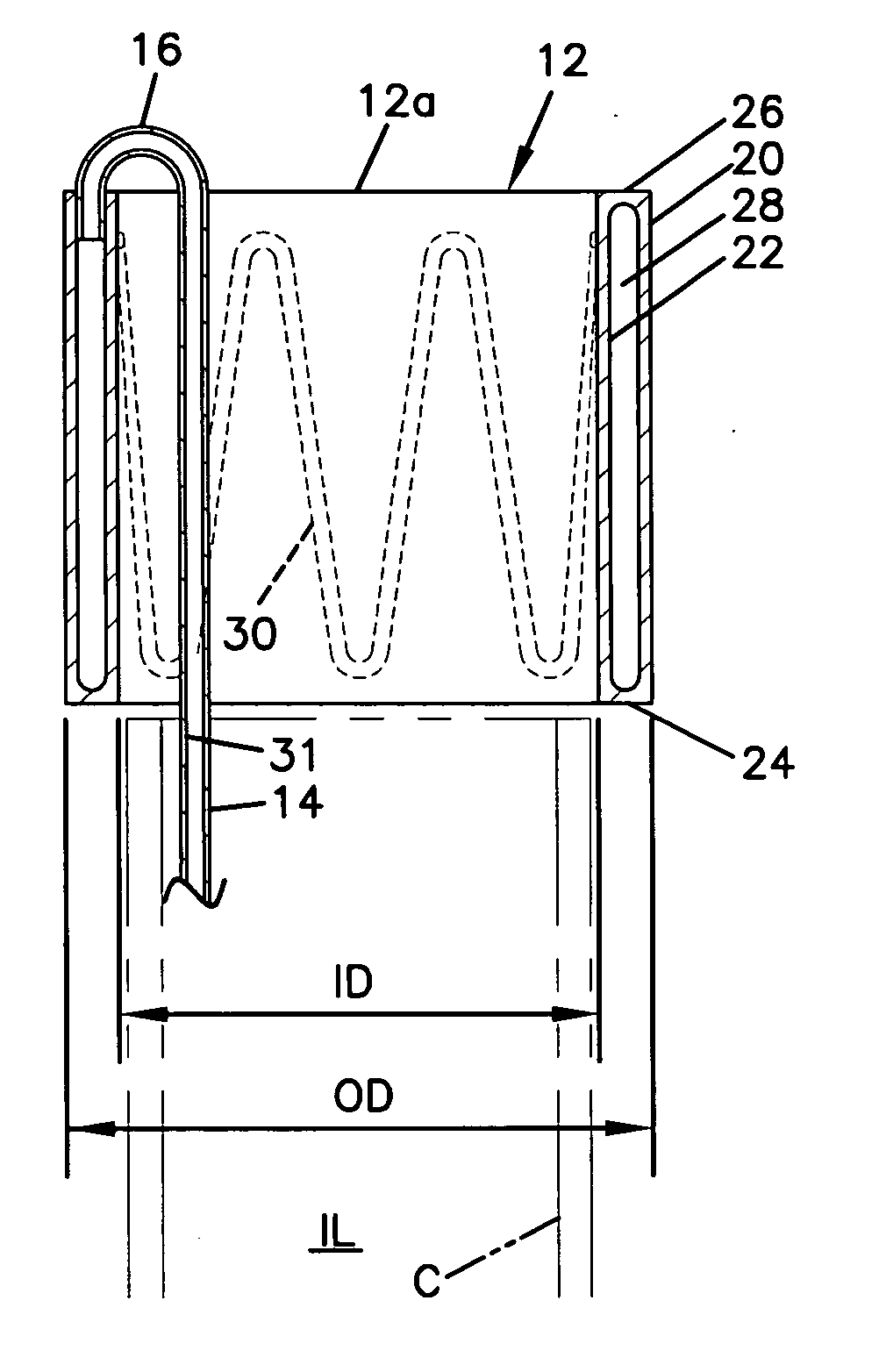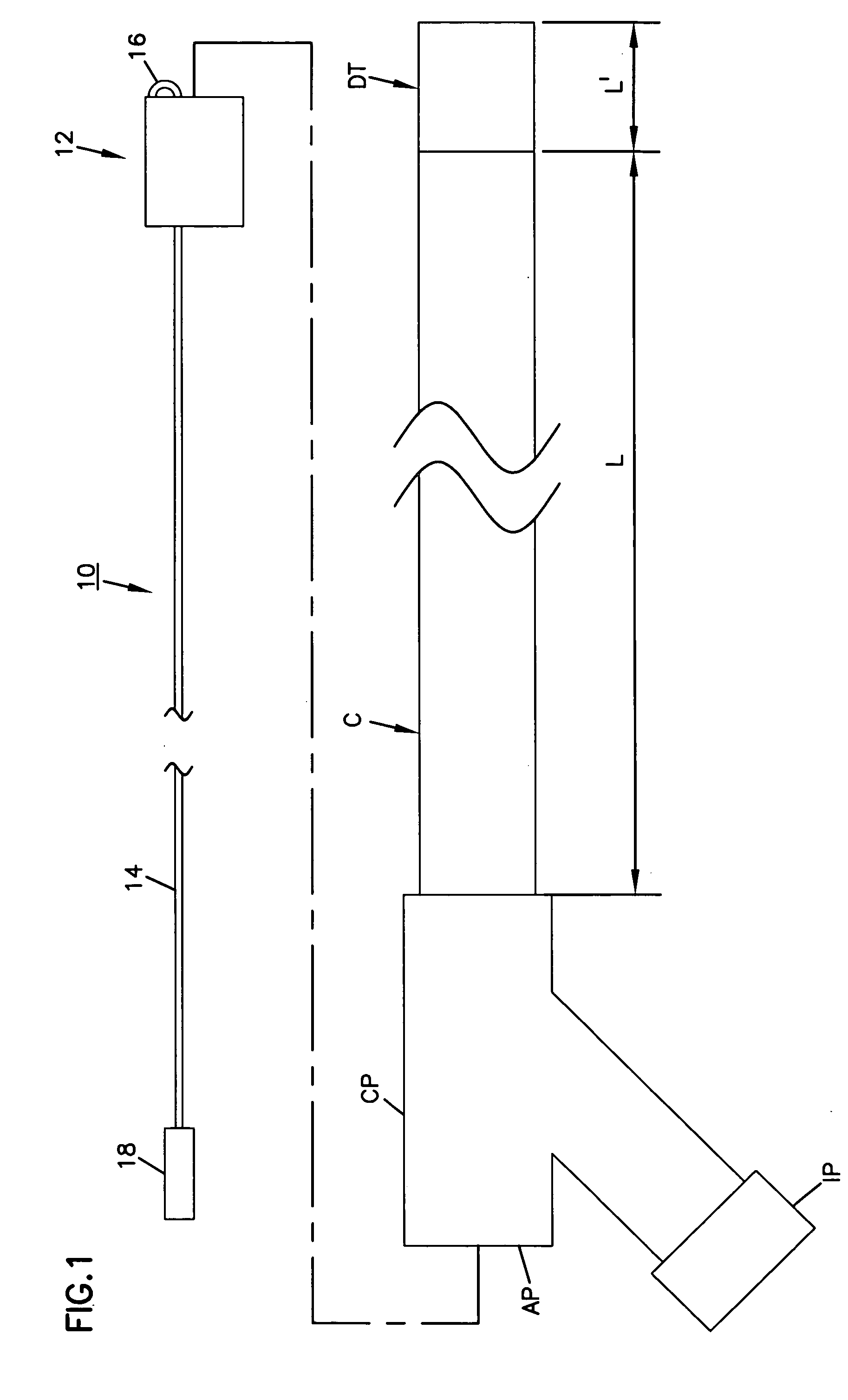Vascular occlusion delivery
- Summary
- Abstract
- Description
- Claims
- Application Information
AI Technical Summary
Benefits of technology
Problems solved by technology
Method used
Image
Examples
Embodiment Construction
[0051] With reference to the various drawing figures in which identical elements are numbered identically throughout, a description of a preferred embodiment of the present invention will now be provided.
[0052] Throughout, description may be made of certain selected materials which may be used in a preferred embodiment of the present invention. However, it will be appreciated that material selection may vary as will occur to one of ordinary skill in the art. It is intended that all materials used within the apparatus of the present invention shall be biocompatible materials selected for safe use within human vasculature and susceptible to withstanding the rigors of sterilization procedures in accordance with regulations of the United States Food and Drug Administration or similar regulatory authorities in other countries.
[0053] With initial reference to FIGS. 1-8, a first embodiment of the present invention will now be described. In FIG. 1, an occlusion system 10 is shown for use ...
PUM
 Login to View More
Login to View More Abstract
Description
Claims
Application Information
 Login to View More
Login to View More - R&D
- Intellectual Property
- Life Sciences
- Materials
- Tech Scout
- Unparalleled Data Quality
- Higher Quality Content
- 60% Fewer Hallucinations
Browse by: Latest US Patents, China's latest patents, Technical Efficacy Thesaurus, Application Domain, Technology Topic, Popular Technical Reports.
© 2025 PatSnap. All rights reserved.Legal|Privacy policy|Modern Slavery Act Transparency Statement|Sitemap|About US| Contact US: help@patsnap.com



